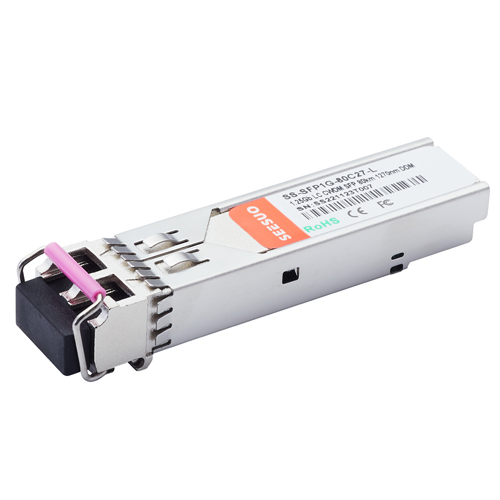- Related articles
- Optical Transceivers for Cisco SF302-08PP-K9-EU Switch
- Optical Transceivers for Cisco WS-C4948E-F-E Switch
- Optical Transceivers for Cisco WS-C3650-24PWS-S Switch
- The difference between TDM and WDM
- Optical Transceivers for Cisco N6K-C6001-64P Switch
- Optical Transceivers for Cisco WS-C3650-24PS-S Switch
- Optical Transceivers for Cisco SF350-48P-K9-UK Switch
- Used in 10GBASE-LRM Standard optical transceiver models
- The Things You Need to Know about 10GBASE-X Ethernet Standards
- What is the speed of Gigabit Ethernet?

Definition
1000BASE-SX is a fiber optic Gigabit Ethernet standard for operation over multi-mode fiber using a 770 to 860 nanometer, near infrared (NIR) light wavelength.
1000BASE-LX is a fiber optic gigabit Ethernet standard specified in IEEE 802.3 Clause 38 which uses a long wavelength laser (1,270–1,355 nm), and a maximum RMS spectral width of 4 nm. 1000BASE-LX is specified to work over a distance of up to 5 km over 10 µm single-mode fiber.
Application
1000BASE-SX
The standard specifies a distance capability between 220 metres (62.5/125 µm fiber with low modal bandwidth) and 550 metres (50/125 µm fiber with high modal bandwidth). In practice, with good quality fiber, optics, and terminations, 1000BASE-SX will usually work over significantly longer distances.
1000BASE-LX
1000BASE-LX is specified to work over a distance of up to 2 km over 9 µm single-mode fiber. In practice it will often operate correctly over a much greater distance. Many manufacturers will guarantee operation up to 10 or 20 km, provided that their equipment is used at both ends of the link. 1000BASE-LX can also run over multi-mode fiber with a maximum segment length of 550 m. For any link distance greater than 300 m, the use of a special launch conditioning patchcord may be required. This launches the laser at a precise offset from the center of the fiber which causes it to spread across the diameter of the fiber core, reducing the effect known as differential mode delay which occurs when the laser couples onto only a small number of available modes in multi-mode fiber.
1000BASE-ZX
1000BASE-ZX is an Ethernet transmission system which uses 1,550 nm wavelength to achieve distances of at least 70 kilometres (43 miles) over single-mode fiber. The distances up to 120 kilometres (75 miles) over single-mode fiber, sometimes called 1000BASE-EZX. Ranges beyond 80 km are highly dependent upon the path loss of the fiber in use, specifically the attenuation figure in dB per km, the number and quality of connectors/patch panels and splices located between transceivers.
1000BASE-TX
The device is simpler to implement and is called it 1000BASE-TX .The simplified design would have, in theory, reduced the cost of the required electronics by only using two unidirectional pairs in each direction instead of four bidirectional pairs. These have wide range of applications in the high speed data transfer applications. However, this solution has been a commercial failure due to the mandatory Category 6 cabling that is involved in the manufacturing and usage of the product and the rapidly falling cost of 1000BASE-T products.
Conclusion
Gigabit Ethernet standards are defined in the 802.3z standards of Project 802 developed by the IEEE. 1000BASE-LX technologies are in the beginning stages of being widely implemented in enterprise-level networks and are primarily used for long cable runs between pieces of equipment on a campus or within a building. When you use multimode fiber-optic cabling in 1000BASE-LX implementations, a condition called differential mode delay (DMD) can sometimes occur.






































































